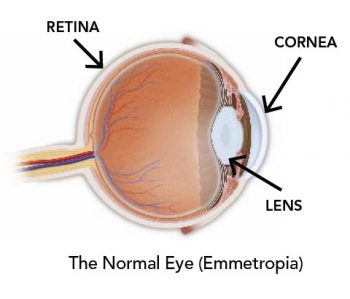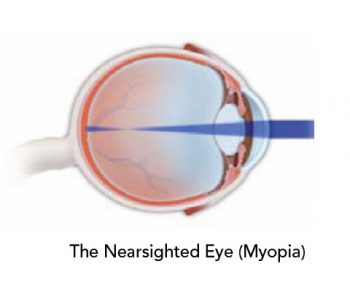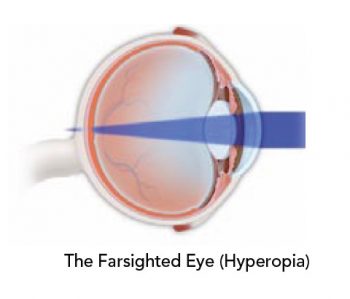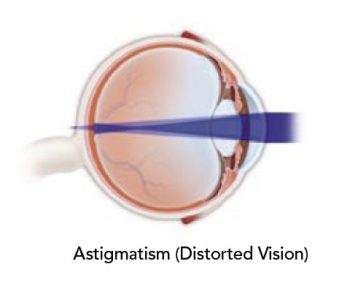Kaiser Permanente Laser Vision Correction
Phone: tel:+18883300665
Understanding Your Vision

How Does the Eye Work?
The Normal Eye (Emmetropia)
The term “refractive” refers to how light rays focus on the retina, the photosensitive layer that lines the inside of the back of the eye. A variety of factors determine how sharply an image is focused. The cornea provides most of this focusing power. In a normal (emmetropic) eye, distant objects appear sharp and clear because they are focused directly on the retina.

The Nearsighted Eye (Myopia)
Myopia (nearsightedness) occurs when the cornea is too steep or the eye is too long, resulting in light focusing in front of the retina. Distant objects appear blurred or fuzzy. Near objects, viewed at the proper distance, can be seen clearly.
Modern surgical techniques can change the shape of the cornea to correct or significantly reduce myopia. To date, two techniques have gained a wide following among refractive surgeons: LASIK (Laser Assisted In-Situ Keratomileusis) and surface ablation (including PRK (PhotoRefractive Keratectomy) and LASEK (Laser Assisted Sub-Epithlelial Keratectomy). These procedures reshape (or slightly flatten) the cornea to allow images to be focused on the retina to improve clarity of vision.

The Farsighted Eye (Hyperopia)
Hyperopia (farsightedness) occurs when the curvature of the cornea is too flat or the eye is too short, causing light rays to focus behind the retina. Both distant and near objects often appear blurred.
Laser vision correction reshapes the cornea, increasing the corneal curvature in hyperopes. This increases the power of the cornea and allows images to be clearly focused on the retina. The goal of LASIK eye surgery or surface ablation for the hyperopic patient is to allow images to be focused on the retina to improve clarity of vision.

Astigmatism (Distorted Vision)
Astigmatism is usually caused by an uneven corneal curvature. In the normal eye, the surface of the cornea is round like a soccer ball (spherical). With astigmatism, the cornea is slightly oblong, like a football. This causes light rays to focus at different places in the eye. Objects at all distances appear blurred. Both nearsighted and farsighted individuals may have astigmatism that further contributes to their poor vision. Laser vision correction can correct this oblong shape of the cornea, and thus eliminates the blurred vision caused by astigmatism.
Presbyopia
Presbyopia occurs in most individuals around the age of 40 to 45 years. This develops because the lens inside the eye loses its ability to change shape and allow near focusing. People compensate for presbyopia by using bifocals and reading glasses. Although there is no surgical cure for presbyopia, symptoms can be reduced with monovision.
Back to Top
